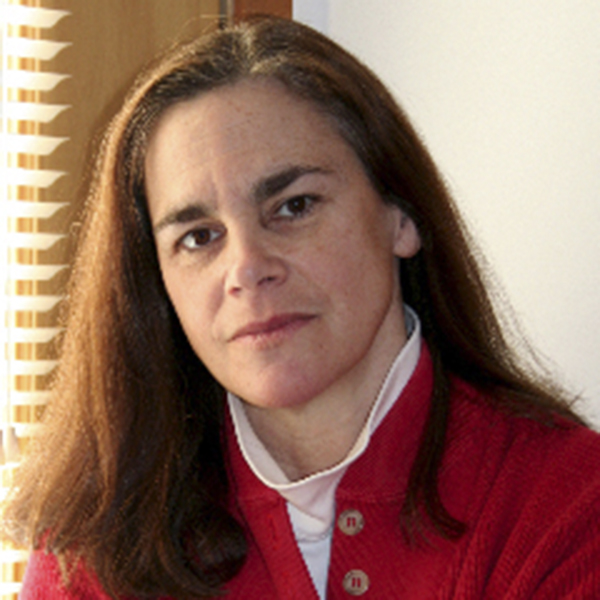

The writer Anaïs Nin once dubbed the architect as “the obstetrician of culture.” With the publication of the prescient, best-selling “Not So Big House” in 1998, the architect Sarah Susanka struck a chord that has been resonating with the American public ever since.
And for the architects and builders who attended her keynote address on Wednesday, March 10, sponsored by Marvin Windows and Doors at the Riverhead Building Supply trade show at East Wind in Wading River, Ms. Susanka strummed the chord once again, but this time with an explanation of why it keeps reverberating.
For years, the tool used as the benchmark linked to the worth of a home was square footage. However, this really has nothing to do with “looking for a sense of home,” as recalled by Ms. Susanka, who grew up in England. As an example, she remembered the formal houses of her youth as having living rooms with plastic seat covers that were never used. The attraction of “big” meant that bigger was better. The reality, however, is that a small house can be made to feel large while a large house can also feel small.
In rethinking how we as consumers and as homeowners live today, Ms. Susanka came to the conclusion that a real sense of home has to do with the notion that a quality building should last for hundreds of years. Of course, this is nothing new and the architecture critic John Ruskin, espoused this sentiment in “The Seven Lamps of Architecture” back in 1848.
“Therefore when we build, let us think that we build forever. Let us not be for present delight, nor for present use alone, let it be for such work as our descendants will thank us for, and let us think, as we lay stone on stone, that a time is to come when those stones will be held sacred because our hands have touched them, and that men will say as they look upon the labor and wrought substance of them, ‘See! This our fathers did for us.’”
Ms. Susanka went on to explain that the way to emphasize the quality of a home was to make it personal. The house has to work in three dimensions and something as simple as lighting controls can cause a shift in the character of a space.
Creating variety with different ceiling heights throughout a home can also alter the spatial experience. Playing with tall/narrow, light/dark and “layering” by framing openings between rooms, can denote a demarcation of spatial experiences.
The architect also noted that we are physiologically attracted toward light and that opening chopped up spaces can add to our sense of well-being. Not so big remodeling strategies can also include the removal of an object (i.e., a little wing) to improve existing spatial resources. Or, taking on a larger purview, instead of tearing down houses in small-scale neighborhoods to make way for McMansions, the alternative can be realized in the refurbishing of an existing home that would be sympathetic in size and character to the neighborhood.
So how big is not so big? According to Ms. Susanka, it should be one third smaller than what you think you need, but for the same price.
In the early 1970s, according to Ms. Susanka, “cultural creatives” gave birth to the sustainability movement. Disregarding monetary limitations, these individuals regarded the home as a value system that needed to embody beauty and balance, harmony and sanctuary. While not having to impress, it did, however, have to engage the issues of sustainability and well-being in the home, as well the art of craftsmanship.
She did not mention, on the other hand, that the price of oil and the embargoes then had much the same effect as $150-a-barrel oil did a little over a year ago. It is also not coincidental that during the summer of 2008, the public witnessed rapid responses across the country with regard to local energy legislation initiatives and conservation measures.
The suggestion is that we, as homeowners, can make a difference by building smaller, smarter and with added quality. But will this really work given the global energy crisis? If all of the private homeowners suddenly become socially responsible by buying compact fluorescent light bulbs and insulating every leaky crevice after energy audits are performed on their homes, will these efforts really make a difference? Probably not much.
Architecture has always been used as a tool to address social conditions. Ms. Susanka, in short, advocates for a privatized responsibility with regard to sustainability. Staving off an environmental holocaust, nonetheless, will take more than the good will of individuals well-off enough to afford remedies in their own personal environments.
What we really need is a transcendental architecture removed from the whims of fashion (as in “green statement”), an architecture that relates to process, to ethics and a broad, sweeping concern with societal needs. Balanced against aesthetics while infused with material solutions that are not object oriented, this new architecture to which Ms. Susanka tactfully alludes could render a different role for the architect, one that encompasses both that of moderator and impresario in these uncertain times.
Anne Surchin is an East End architect and writer.
 More Posts from Anne Surchin
More Posts from Anne Surchin